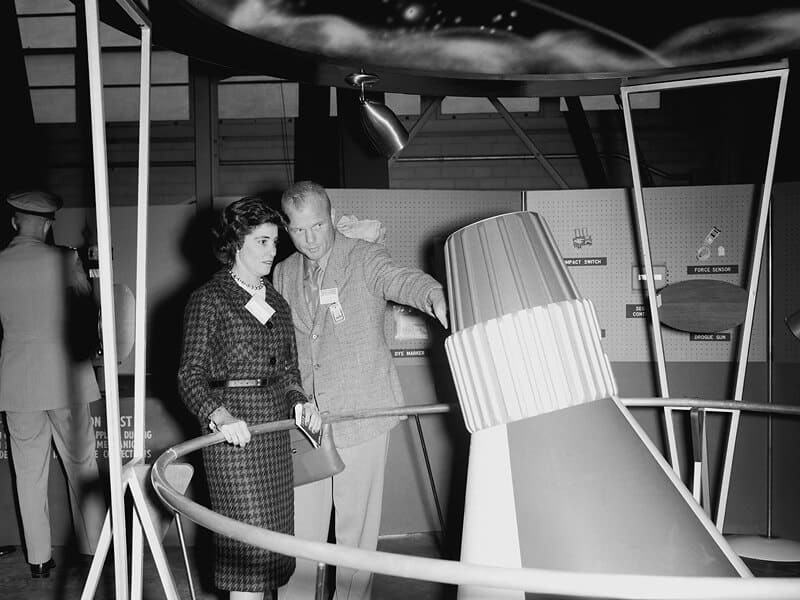Glenn spent a lot of time at the Mercury Program training facility at NASA's Langley Center. Veterans of the center remember those days

"They were extraordinary people" says researcher Bill Scullion, a veteran researcher, now retired from the Langley Space Center, or as writer Tom Wolf defined, "the elite team".
There were but seven original Mercury program astronauts, all chosen from a pool of Thirsty test pilots. It was 50 years ago, on February 20, 1962 - that one of them, John Glenn, was the first American to circle the Earth.
The group began space travel at NASA's Langley Center with the establishment of the Space Flight Task Force, which was based in Hampton until June 1962. Six of the seven, except Glenn, moved with their families to Hampton Roads. Glenn stayed in the military quarters at Langley Air Force Base and came home to Northern Virginia on weekends, says Jim Hansen, author of Space Flight for Revolution. NASA's English Research Center from Sputnik to Apollo."
Scullon remembers working with Glenn and others during training and simulations. "I could tell John Glenn to do anything and he would do it right," Scullion said. "There is a picture of him on a pedestal where he is waving in a space suit. He actually waved at me when I left, after I helped him sit in the capsule at the training facility for four and a half hours."
Preparations at Langley for Glenn and the rest of the crew included a rigorous physical training regimen, including dives that simulated weightlessness and the kind of sensory disruption they might experience during a return from space," Hanson writes.
Glenn trained for his flight in the Mercury capsule, dubbed Friendship 7, which lasted four hours, 55 minutes and 23 seconds, and included three orbits of the Earth.
Retired Langley photographer Fred Jones was aboard the aircraft carrier in the Atlantic Ocean to document Glenn's historic landing. He was unsuccessful because the capsule missed its intended landing spot, but he photographed Glenn aboard the warship that picked him up. Jones spent a lot of time with Mercury's seven crew members, documenting their stay at Langley. "They were test pilots, typical pilots," Jones said. "It was never a problem to photograph them."
He remembers that Glenn was different from the others, he was quiet" said Jones. But Glenn's records as a fighter pilot in World War II and the Korean War, the first American to orbit the Earth, and the oldest astronaut to fly on the space shuttle, speak for themselves.
Glenn served as an Ohio state senator for 24 years and returned to space aboard the space shuttle Discovery in 1998, when he became the oldest person to fly into space at age 77.
John Glenn, now 90 years old, chose to visit Cape Canaveral in Florida on Friday, the place from which he took off 50 years ago for his historic flight, together with Scott Carpenter - the only other survivor of the elite seven.
Glenn remembered how he and his elite crewmates arrived at Cape Canaveral to watch the launches. It was a night launch and the missile exploded over their heads. "It was not a confidence building event on our first trip to the Cape" said Glenn. Following the malfunction, improvements were made and Glenn said that he gained confidence in his Mercury-Atlas missile, which was a nuclear missile that had been converted to a launcher. Otherwise, he said, he wouldn't have climbed into it.
As mentioned, Glenn took off on February 20, 1962, and Carpenter was the second American pilot to go into orbit aboard the Aurora spacecraft on May 7, 1962. They were the third and fourth Americans to go into space after Alan Shepherd and Gus Grissom who flew suborbital missions in 1961, the year the Soviet Union Launched two cosmonauts into orbit. It took another seven years to set a record that the Soviets were unable to break - manned flights to the moon.

One response
Oh and Yuri Gagarin just flying high didn't do anything interesting worth mentioning